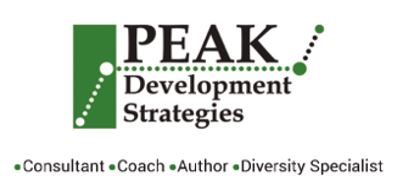Maintaining a motivational climate sets the scene for maximizing the talents and abilities of the individuals who make up the entire organization. People who are motivated, who maintain a positive attitude toward the organization and their role in it, and who are enthusiastic about their work, always look for opportunities to grow and develop.
They want to grow in personal effectiveness, in career standing, and in job productivity. The most effective impact a leader can make on the “bottom line” – the place where all productive effort must eventually be evaluated – is to help team members develop and use more of their full potential.
People grow personally and become highly productive in a climate that is conducive to personal and professional development. Growth is further accelerated in a work environment that offers the freedom to try new ideas, to fail and try again, and to learn from experience.
Career growth is a lifelong process. But the organization cannot afford to wait 20 years or longer for employees to mature to their top professional capacity. Maturity in one’s career never arrives just by merely waiting for it. Today’s
fast-paced business world warrants immediate action. It makes sense, then, to use each person’s existing strengths to the fullest extent possible. The organization gains the immediate benefit of high productivity and the employee gains the experience of success. Discovering everyone’s best qualities can be a complicated process. Talents and abilities are sometimes unrecognized even by the one who possesses them.
People – like their attitudes, skills, and interests – are never static. They either grow and develop or stagnate and deteriorate. A person who is productive today will be producing substandard work in a few years or even months unless regular and continuous learning takes place. This is true for people at every level of the organization. As a leader of the organization, you have the responsibility to provide adequate opportunities for continuous improvement. Team members need to consistently grow in three key areas to increase their productivity and use more of their full potential.
- Knowledge and information. Every field is changing. New methods, technologies, and approaches are being developed daily. It is now predicted that the amount of information in the world doubles every five to seven years! Valuable information you possess today can become obsolete tomorrow. Information and knowledge are abundant. There are literally millions of different sources and suppliers of information. Although knowledge and information are critical for team members to be productive, they are the most easily obtained. The difficult task is to locate and identify the right information at the right time. The key is to clarify the specific information and knowledge each team member needs and then make it readily available to him or her.
- Skills and behavior. Management, communication, sales, and time management are personal effectiveness skills that can be sharpened by appropriate training. Training may be informal or formal. It may take place in brief segments or a long, connected period. It may be on-site or at another location. It may be conducted by a leader, by an organizational training department, or by an outside specialist. The type of training should fit the needs and personalities of the people involved.
- Goals, attitudes, and motivation. Organizations spend enormous sums of money on teaching new information and upgrading skills through training for their employees. Unfortunately, most organizations neglect the most important area of personal growth – the goals, attitudes, and motivational factors of team members. People may have access to unlimited amounts of information, they may have received training in every conceivable skill, but if their goals are faulty or unclear, if their attitudes are negative or unproductive, or if their motivation is lacking, the huge investment of time, energy, and money will be for nothing. Information and skills are only the tip of the iceberg. Just like an iceberg, as much as 90 percent of a person’s potential lies beneath the surface, hidden from view. Ultimately, a person’s success is determined by his or her focus on clearly defined goals, an enthusiastic attitude, and compelling motivation. A person who has these qualities will always find the information and develop the skills necessary to succeed. Without these qualities, a person’s knowledge and talents deteriorate and waste away just like an unused muscle becomes weak without consistent and regular use.
Personal and professional development is most effective when planned around the requirements of the organization and when carried out according to a carefully devised plan of action. Maintain a specific, ongoing development plan for each person under your leadership and evaluate the effectiveness of each team member’s effort. When you know where growth is needed and what results can be expected, you can realistically plan for its achievement.
A systematic development program brings several benefits to the organization. A primary benefit is that well-trained, knowledgeable, goal-directed, and motivated people are always available to complete the needed tasks. Morale remains high because people know they are appreciated and considered valuable to the organization. An even better benefit of a systematic development plan is that individuals become more productive, resulting in the overall growth of the organization and ultimately bolstering the bottom line!
LMI Journal

Recent Comments